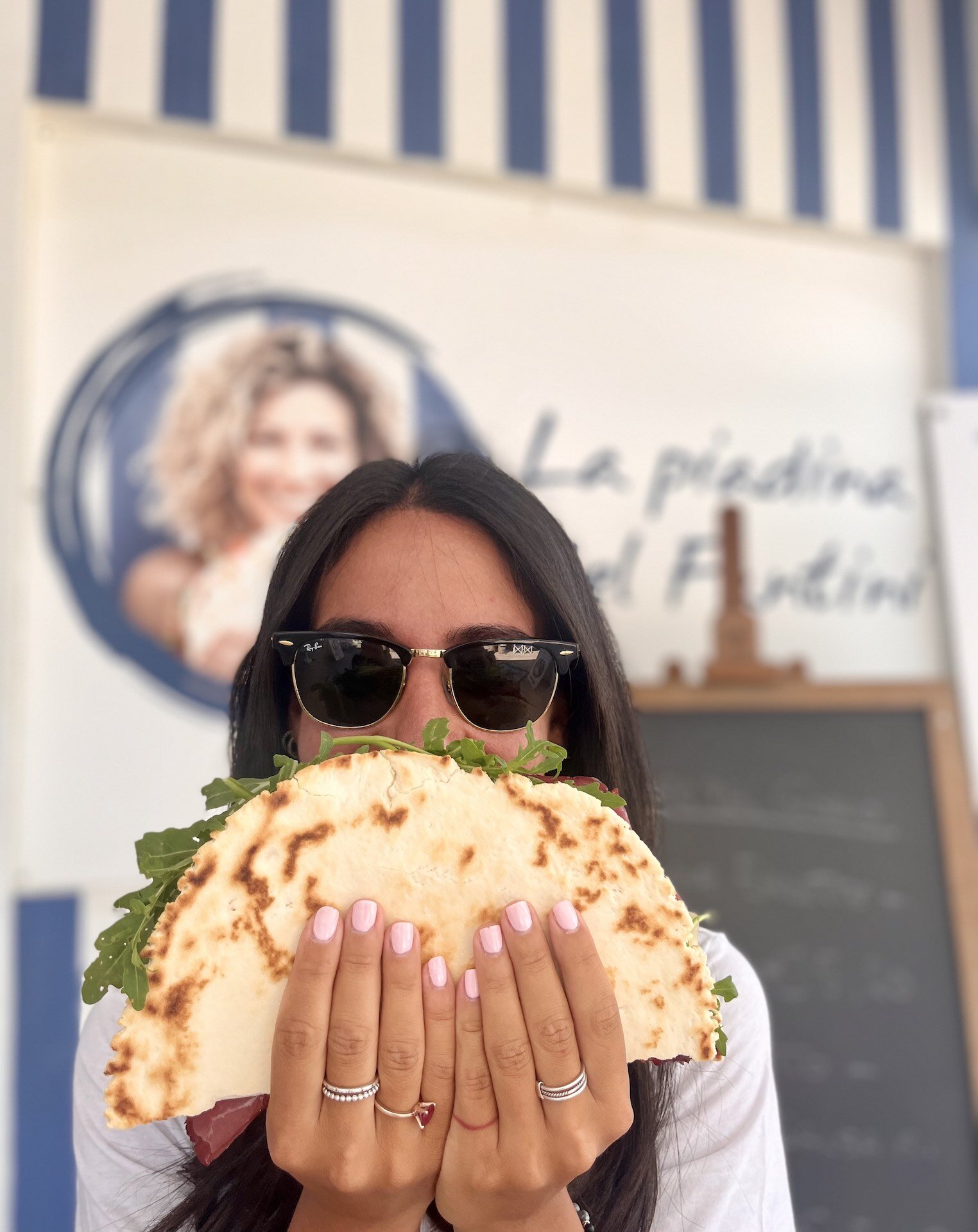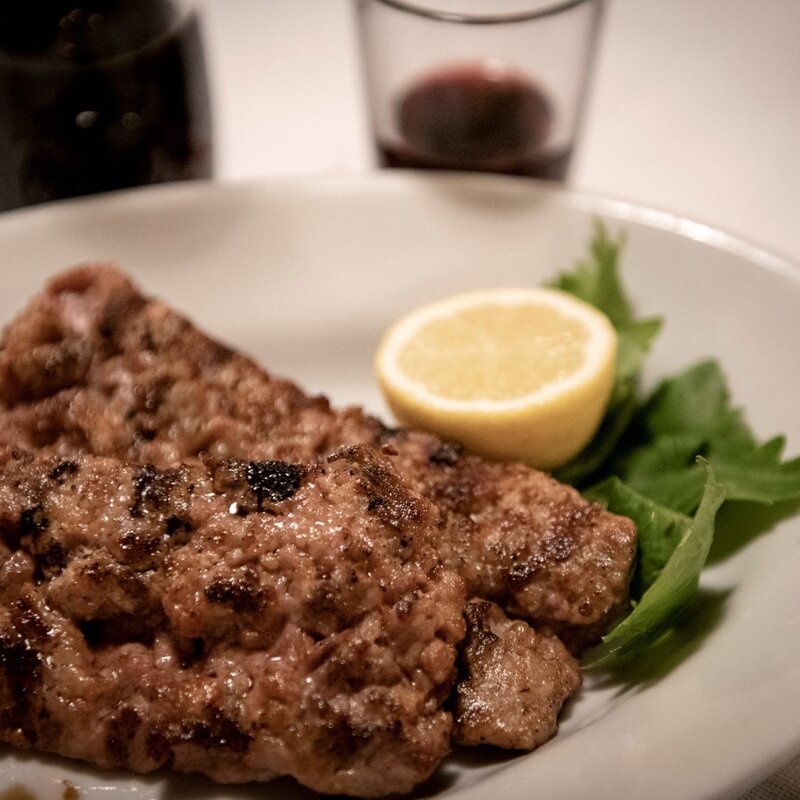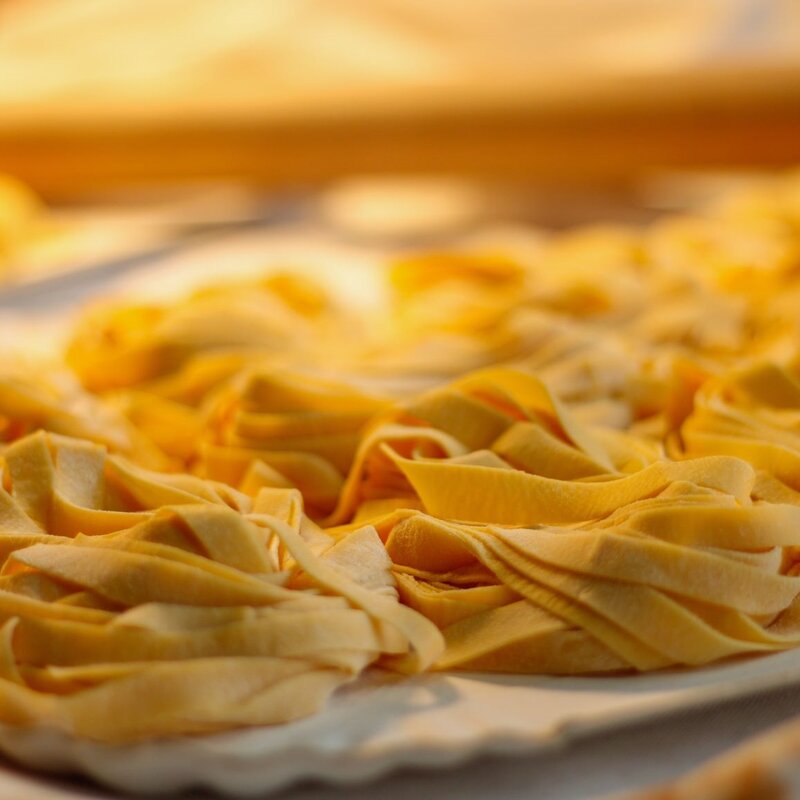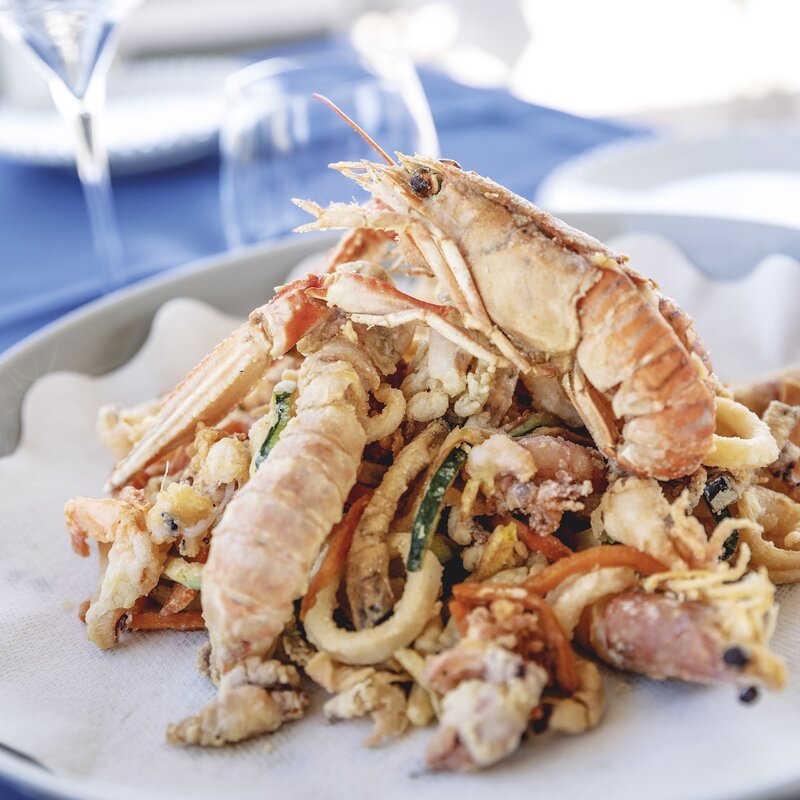The traditional recipe for a piadina
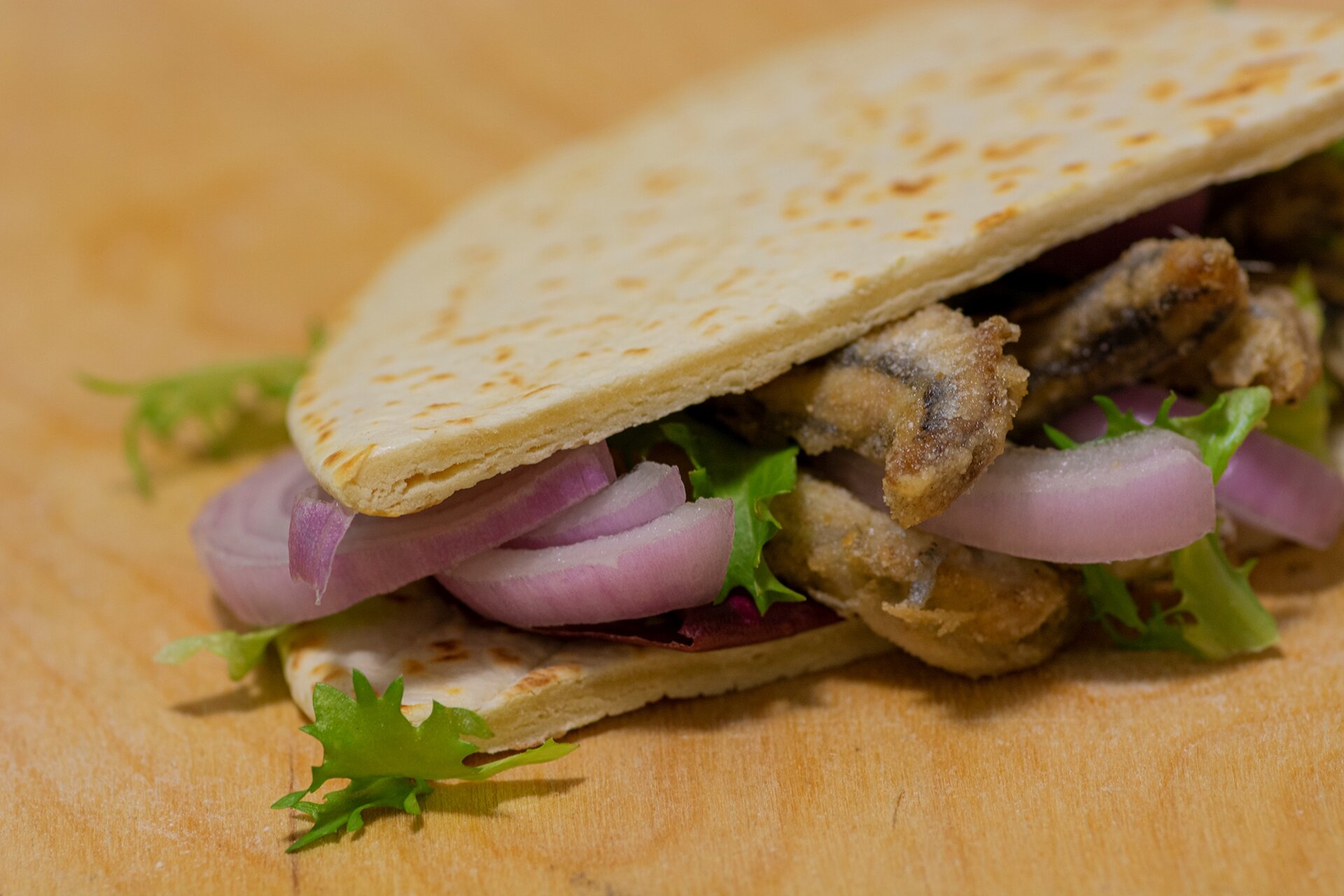
This is the perfect place to start learning about our cooking. Quick to make, using just a few simple ingredients, a piadina is a great snack at any time of day.
And while there are some important rules to follow when making the dough, you can get more creative when it comes to the fillings.
There are some obvious choices, like squacquerone cheese, cured ham and rocket, a classic combination. Or maybe you would prefer watercress? Every town has its own variations on the recipe and the thickness can vary, from 6 mm thick in Ravenna to the pancake-thin versions in Rimini.
Here is the recipe for a Cervia-style piadina from the legendary cookery writer Pellegrino Artusi:
Makes around 10 piadinas:
- 1 kg of soft wheat flour
- 140 g of lard or 4 tablespoons of extra-virgin olive oil
- enough water to create a dough with the right consistency
- 20 g of baking powder or 5 g of bicarbonate of soda
- 15 g. of salt
First of all, pour the flour out onto a work surface, make a well in the centre, and add the cooled lard. Sprinkle over all of the salt. Begin to combine, adding small amounts of lukewarm water until you achieve a soft and smooth dough. The mixture then needs to rest for around 20 minutes.
After it has rested, shape the dough into 10 small balls and roll it out with a rolling pin, trying to create a circle of the desired thickness. We recommend that you cook your piadina as soon as it takes shape, to preserve the starch contained in the flour and to ensure it remains fresh.
Our top tip: prick the surface with a fork to allow the heat to get inside more quickly. If you have one, we recommend using the traditional terracotta pan, which you can buy on the market in Cervia every Thursday morning, otherwise a cast iron pan or a non-stick frying pan are just as good. The heat needs to be high because a piadina should be cooked quickly.
As it cooks, you will see the distinctive bubbles appearing on the surface. Et voilà! Your piadina is ready to be served.
Delicious hot with cured meat, cheese, and vegetables. How good is that?
